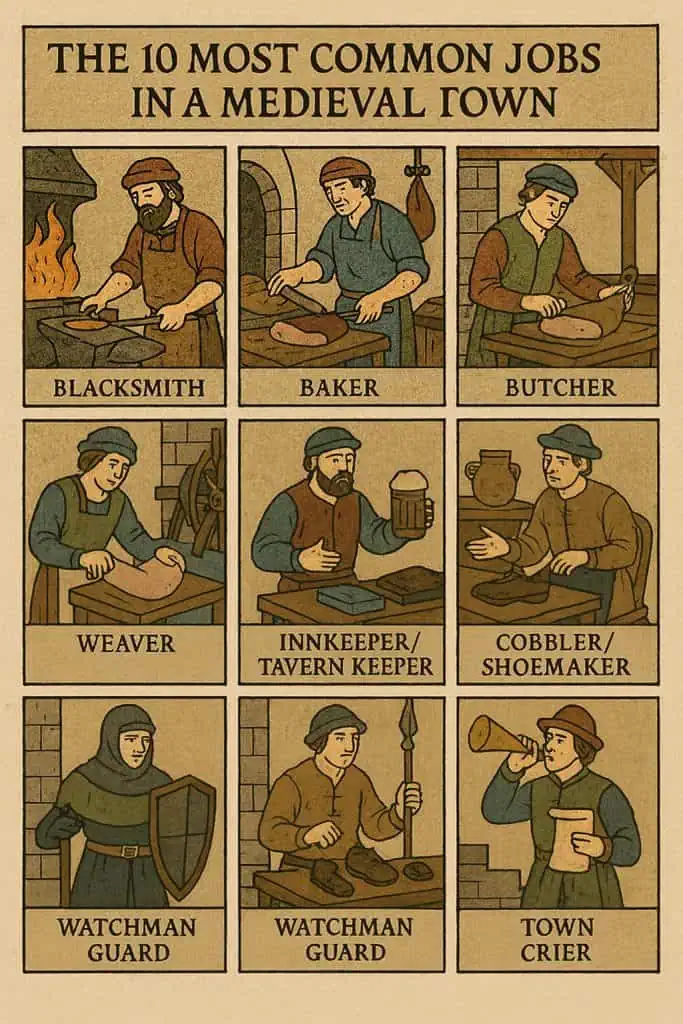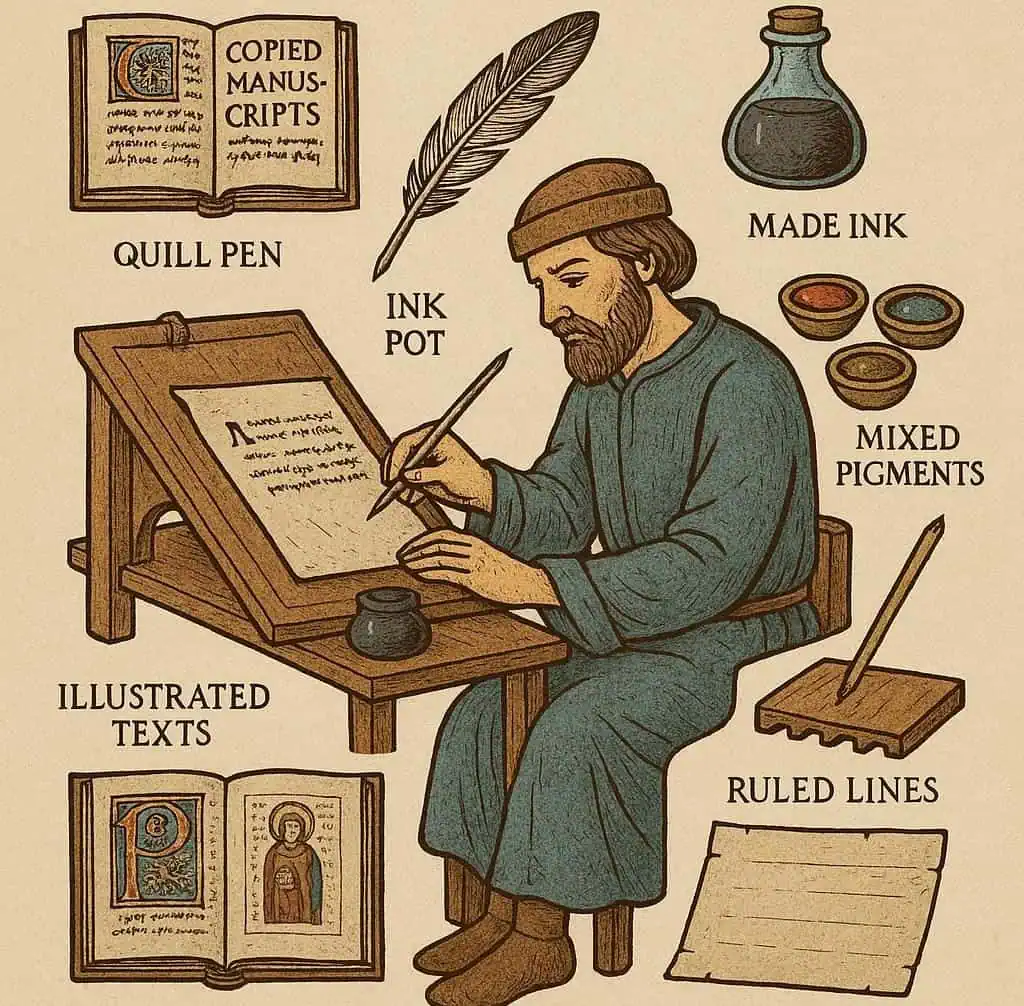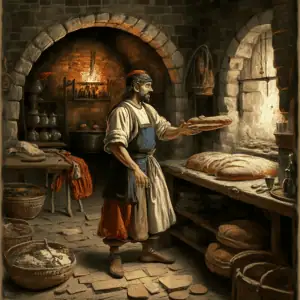Life in a medieval town was shaped by a wide range of occupations. From bakers and butchers to blacksmiths and scribes, these medieval jobs kept communities functioning and allowed towns to grow. The economy of the Middle Ages depended heavily on craftsmen, tradesmen, and guilds that regulated skills and standards. Below we explore the ten most important jobs in a medieval town, their responsibilities, and why they were vital to medieval life.

1. The Blacksmith
The blacksmith was one of the most crucial figures in a medieval community. Blacksmiths forged and repaired weapons, armor, farming tools, and horseshoes. Without their craft, both agriculture and defense would have collapsed.
Blacksmiths were sometimes called on to act as executioners because of their strength and skill with iron tools.
2. The Baker
The baker provided the essential staple of the medieval diet—bread. Working long hours through the night, bakers ensured fresh loaves were ready for the morning market.
3. The Butcher
Butchers supplied meat, which was expensive and less common than bread or pottage. Regulations controlled butchers to prevent fraud and protect customers from unsafe meat.

4. The Miller
The miller operated the watermill or windmill, grinding grain into flour. Since bread was the foundation of most diets, the miller held great importance in every medieval town.
Many medieval towns required peasants to use the lord’s mill and pay a fee, creating resentment and occasional revolts.
5. The Carpenter
Carpenters built homes, barns, carts, and furniture. Skilled in woodworking, they were essential to town infrastructure and everyday life.
6. The Weaver
Weavers produced cloth from wool or flax, often working in guilds that regulated training and quality. Clothing was costly, making weaving a valuable profession.
7. The Tanner
Tanners transformed raw animal hides into leather for shoes, saddles, belts, and armor. The tanning process produced strong odors, so tanneries were usually outside the main town.
Tanneries used a mix of urine and rotting organic matter in leather production, which made them unpopular with neighbors!
8. The Merchant
Merchants connected medieval towns with wider trade networks. They sold goods from other regions and imported luxuries like spices and silk. Wealthy merchants often rose to positions of power within town councils.
9. The Scribe
Scribes recorded legal documents, contracts, and accounts. In an age when literacy was rare, scribes were vital for communication and record-keeping.

10. The Town Watchman
The watchman kept order, patrolled the streets at night, and enforced curfews. Watchmen acted as early forms of police, ensuring safety in bustling medieval towns.
Some towns rang a “curfew bell” each evening, signaling that all fires had to be extinguished for safety.
Everyday vs. Specialized Jobs
Not all medieval occupations were equal. Some were essential for daily survival, while others required specialized training and resources. The table below compares everyday trades to more specialized jobs.
| Type of Work | Everyday Jobs | Specialized Jobs |
|---|---|---|
| Food Production | Baker, Butcher, Miller | Tanner |
| Crafts & Building | Carpenter, Weaver | Blacksmith |
| Services | Watchman | Scribe |
| Trade | Market Vendor | Merchant |
Glossary of Medieval Jobs
- Guild
- An association of tradesmen regulating standards, prices, and training.
- Apprentice
- A young worker learning a craft under a master tradesman.
- Journeyman
- A trained worker traveling to gain experience before becoming a master.
The Legacy of Medieval Jobs
The jobs of medieval towns reveal a society where survival depended on skilled labor and cooperation. Many of these professions—blacksmiths, bakers, weavers, and merchants—still exist today, showing how medieval work shaped modern trades and urban life.
❓ Frequently Asked Questions
1. What were the most common jobs in a medieval town?
Common trades included bakers, butchers, millers, carpenters, and weavers, all essential for survival.
2. Why were guilds important?
Guilds protected standards of quality, set prices, and ensured fair training for apprentices.
3. What job brought the most wealth?
Merchants often became very wealthy, as they traded goods across Europe and beyond.
4. How did someone train for a job?
Boys (and occasionally girls) began as apprentices, later advancing to journeymen and eventually masters.
5. Why were some jobs unpopular?
Tanners and butchers were often disliked due to foul smells and messy working conditions.
6. Did women have jobs in medieval towns?
Yes, women worked as midwives, brewers, market sellers, and often supported family trades.






